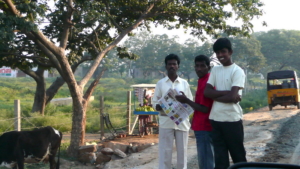4 Poverty Reduction Programs to End Poverty in India

Between 2005 and 2006, there were 640 million people experiencing multidimensional poverty in India. Multidimensional poverty means the people are lacking more than just finances, they are also lacking clean water, electricity, access to healthcare and education. By 2017, that number had dropped to 365 million, a 271 million improvement. Massive strides have occurred in India to improve living conditions. In July 2019, 99.45% of the country had access to basic sanitation, compared to only 40% in previous years, this is all apart of the process to end poverty in India.
About End Poverty
End Poverty in India is a non-governmental organization (NGO) that began in 2009 with the goal of reducing poverty in India. End Poverty currently focuses on helping uneducated girls, struggling women, small farmers, agricultural farmers without land and traditional craftsmen, among others. Currently, its work occurs in the states of Rajasthan, Haryana, Karnataka, Madhya Pradesh, Jharkhand and Delhi. The organization develops and implements self-sustaining programs to act as a catalyst for social impact. Its four main areas of program intervention are sustainable livelihood creation, girls’ education, rural development and civil society development.
4 Poverty Reduction Programs that End Poverty Implemented
- Sustainable Livelihood Creation: At End Poverty in India, sustainable livelihood creation provides equal opportunities to those who are less privileged. The organization helps individuals create sustainable, independent livelihoods with limited reliance on external resources. The interventions that End Poverty in India implemented include sustainable farming, dairy farming development, women’s economic empowerment and a skills training and vocational education program. Recent accomplishments include planting 5,759 saplings in India as part of the sustainable farming intervention between 2019 and 2020, bringing the total of planted saplings to 41,579 since the program began.
- Girls’ Education: Education is a constitutional right in India, but female literacy often lags behind that of men. For example, in Tijara, Rajasthan the literacy rate among females is only 38.88% in comparison to 75.01% among males. One of the most notable programs that End Poverty started is the Kishori Shiksha Program (KSP), which is a one-year, intensive “catch-up” education program for adolescent girls who are no longer in school. As part of the KSP Program, End Poverty in India helped 304 new students enroll in school and 126 girls were able to complete their literacy classes. KSP trains local women in course delivery, teaching methods and record keeping. The organization then supplies both teachers and students with learning materials.
- Rural Development: The 2011 census illustrated that 68.84% of India’s population lived in rural villages. Over the last few decades, various groups have worked to alleviate existing issues in rural communities, including End Poverty in India. Under its rural development program in Tijara, the organization created the Village Development Group (VDG). It will act as coordinators accessing government plans, supporting rural development and making requests based on the needs of their village and tracking the requests through the various levels of government until they reach completion. End Poverty participates in VDG’s meetings and provides help in the preparation and processing of documents and decisions. Accomplishments include opening 147 new bank accounts, installing 45 hand pumps and providing 160 families throughout 19 villages with solar-powered LED light panels.
- Civil Society Development Program: In Indian culture, the idea of civil society organization is deeply important and has been a major reason for the increase in NGOs. Civil society organizations have contributed to the well-being of many communities in India. However, End Poverty has found that many of them still struggle with basic issues such as a lack of funding, structured planning and recognition. These issues were the catalyst for End Poverty to create its N/Core program, which helps early-stage nonprofits that focus on poverty reduction. Mentors of the N/Core program work with the heads of the new nonprofits to speed up their progress and help them create adaptable models for economic development.
End Poverty in India’s work is important and has helped significantly to reduce poverty, but it has more work to do. The organization hopes that its four programs will make a significant difference and provide individuals with the opportunity to live better lives.
– Trystin Baker
Photo: Flickr
